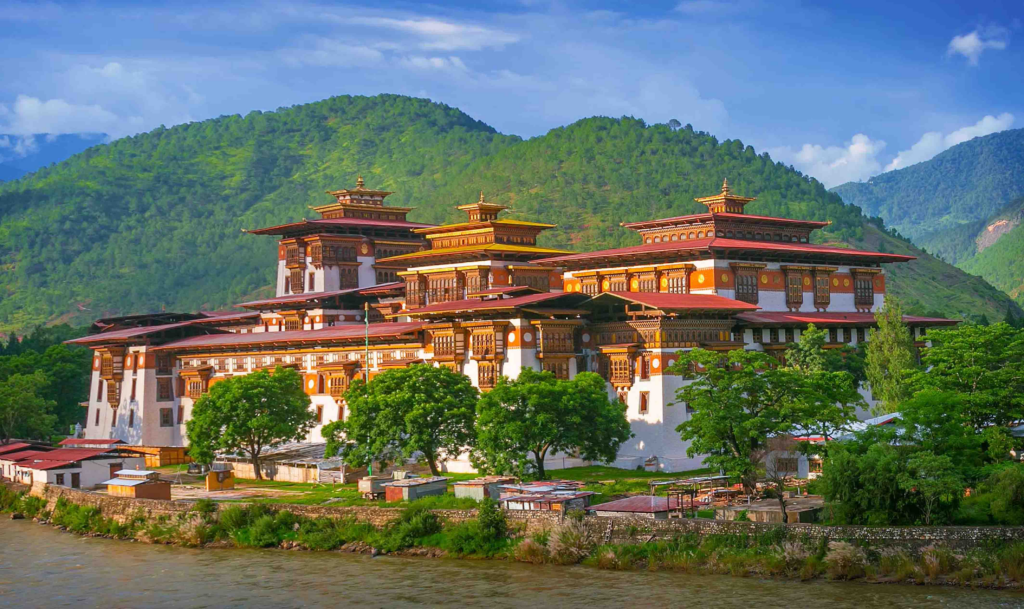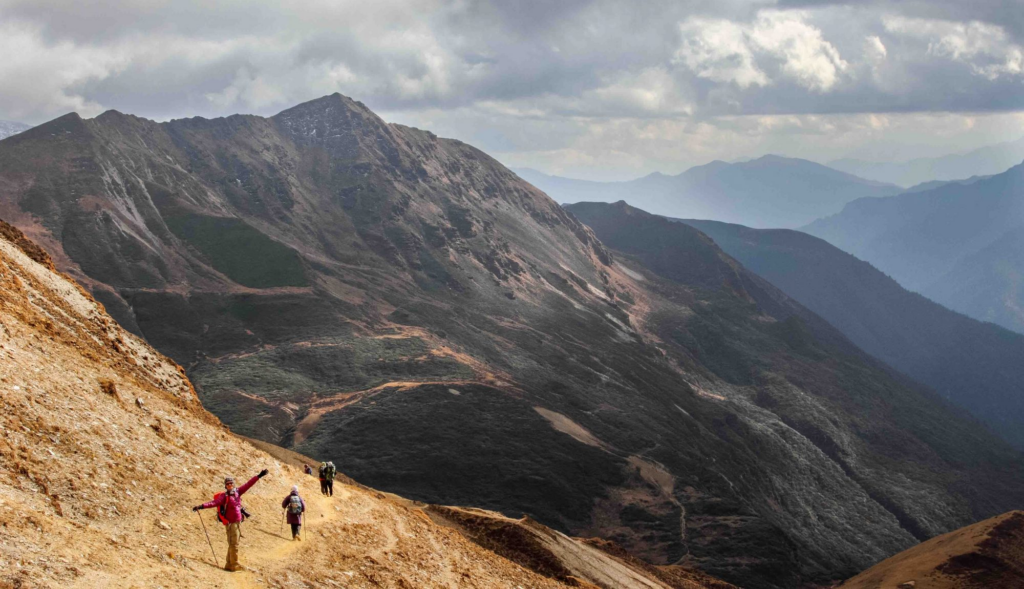Nestled in the heart of the Eastern Himalayas, Bhutan is a destination unlike any other, captivating travelers with its breathtaking landscapes, rich culture, and commitment to sustainability. Often referred to as the “Land of the Thunder Dragon,” Bhutan offers a unique blend of ancient traditions and modern influences. This article explores what makes Bhutan a must-visit destination for travelers, from its stunning natural beauty to its vibrant culture, ensuring that every adventurer finds something worth cherishing. Whether you’re seeking spiritual enlightenment, thrilling treks, or a deep dive into a unique way of life, Bhutan is a place that promises unforgettable experiences.
Discovering Bhutan’s Natural Wonders
Bhutan is renowned for its stunning landscapes, which range from towering Himalayan peaks to lush valleys and pristine rivers. The country’s commitment to conservation has led to the preservation of over 70% of its land as forest, making it one of the most environmentally-friendly nations in the world. Travelers can explore breathtaking national parks such as Jigme Dorji National Park, where rare species like the snow leopard and takin roam freely. The iconic Paro Taktsang, or Tiger’s Nest Monastery, perched high on a cliff, offers not only a spiritual retreat but also panoramic views that leave visitors in awe.
Beyond its mountains, Bhutan’s diverse ecosystems host an array of flora and fauna. The subtropical jungles of the southern region transition into temperate forests in the north, creating a rich tapestry of biodiversity. Trekking enthusiasts can embark on trails that lead them through picturesque landscapes, such as the Druk Path Trek, which connects the valleys of Paro and Thimphu. Each step on these paths reveals hidden waterfalls, serene lakes, and vibrant rhododendron blooms, making Bhutan a true paradise for nature lovers.
Cultural Richness and Spiritual Depth
Bhutan’s culture is deeply rooted in Buddhism, which permeates every aspect of life. The country’s unique approach to Gross National Happiness (GNH) places spiritual well-being on par with economic growth, making for a society that values harmony and mindfulness. Visitors can immerse themselves in Bhutan’s rich cultural heritage by visiting ancient monasteries, such as Punakha Dzong, a stunning fortress that showcases traditional Bhutanese architecture and serves as a symbol of the country’s history.

Festivals, or “Tshechus,” are vibrant expressions of Bhutanese culture, celebrated with colorful dances, music, and rituals. These events, typically held in various dzongs (fortresses), provide travelers with an opportunity to witness the local community’s devotion and artistry. The Paro Tshechu, one of the most famous festivals, features spectacular mask dances and draws visitors from around the world, making it a highlight for those looking to experience Bhutan’s cultural vibrancy firsthand.
Religious Sites and Pilgrimage
The spiritual landscape of Bhutan is dotted with sacred sites that attract pilgrims and travelers alike. The revered Chimi Lhakhang, dedicated to the Divine Madman, is a popular pilgrimage site where visitors can seek blessings for fertility. Similarly, the serene Kila Nunnery, perched high on a cliff, offers a tranquil retreat for meditation and reflection. These sites not only provide insight into Bhutan’s spiritual practices but also allow travelers to engage with the local community and contribute to the preservation of these cultural treasures.
Adventure and Outdoor Activities
For adventure seekers, Bhutan is a treasure trove of outdoor activities that cater to all levels of experience. From thrilling white-water rafting on the Po Chhu and Mo Chhu rivers to mountain biking through scenic trails, the options are endless. The Bhutanese terrain offers a variety of challenges, making it an ideal destination for both seasoned adventurers and casual explorers.

Trekking in Bhutan is particularly noteworthy, with routes that range from easy walks to strenuous hikes. The Snowman Trek, known as one of the toughest treks in the world, takes travelers through remote areas, offering a unique chance to experience the untouched beauty of Bhutan’s wilderness. Along the way, trekkers can encounter traditional villages, encounter friendly locals, and enjoy the hospitality of homestays, enriching their journey with authentic interactions.

Wildlife and Conservation Efforts
Bhutan’s commitment to conservation is evident in its ambitious wildlife protection initiatives. The country is home to several endangered species, and efforts to maintain their habitats are crucial for preserving biodiversity. Wildlife enthusiasts can participate in eco-tours that not only educate visitors about Bhutan’s flora and fauna but also support local conservation efforts. These initiatives ensure that Bhutan remains a sanctuary for wildlife, making it a must-visit for nature lovers and conservation advocates alike.
Bhutanese Cuisine and Culinary Experiences
A journey to Bhutan is incomplete without indulging in its unique culinary offerings. Bhutanese cuisine is characterized by its use of local ingredients, including rice, chili, and cheese. The national dish, Ema Datshi, a spicy mix of cheese and green chilies, exemplifies the bold flavors that define Bhutanese cooking. Travelers can explore local markets, sample street food, and dine in traditional restaurants, gaining insight into the cuisine’s cultural significance.
Cooking classes and food tours are also available, providing visitors with the opportunity to learn about the ingredients and techniques that make Bhutanese dishes so distinctive. Engaging with local chefs and trying your hand at preparing traditional meals not only enhances your understanding of Bhutanese culture but also creates lasting memories of your culinary journey.
Markets and Local Crafts
Bhutanese markets are vibrant hubs filled with local crafts, textiles, and artisanal goods. Visiting markets such as the Centenary Farmers Market in Thimphu allows travelers to experience the hustle and bustle of daily life while supporting local artisans. Traditional crafts, including handwoven textiles and intricate woodwork, make for unique souvenirs that carry the essence of Bhutan’s culture. Engaging with local artisans provides insight into their craftsmanship and the stories behind their creations, enriching your travel experience.
Planning Your Trip to Bhutan
When planning a trip to Bhutan, it’s essential to navigate the unique travel regulations in place. The country follows a policy of high-value, low-impact tourism, which ensures that the natural and cultural heritage is preserved. Travelers are required to book their trips through licensed tour operators, which can help simplify the process and provide valuable insights.
Choosing the right time to visit is also critical. The best seasons are spring (March to May) and autumn (September to November) when the weather is mild and the landscapes are at their most vibrant. Travelers can witness the blooming of rhododendrons in spring or the clear skies that showcase the majestic mountains in autumn.
Accommodation Options
Bhutan offers a diverse range of accommodations, from luxury hotels to cozy guesthouses. Many travelers opt for traditional Bhutanese homestays, which provide an immersive cultural experience while supporting local families. Regardless of your choice, staying in Bhutan gives you a chance to unwind in breathtaking settings and connect with the warmth of Bhutanese hospitality.
Conclusion
In summary, Bhutan stands out as a must-visit destination for travelers seeking a blend of adventure, cultural richness, and breathtaking natural beauty. From its stunning landscapes and spiritual depth to its unique culinary experiences and commitment to sustainability, Bhutan offers something for every type of traveler. By exploring this enchanting kingdom, you not only embark on a journey filled with unforgettable memories but also contribute to preserving the beauty and culture of this remarkable nation. Bhutan is more than just a destination; it’s an experience that resonates long after you leave its shores.
FAQs
What is the best time to visit Bhutan?
The best time to visit Bhutan is during the spring (March to May) and autumn (September to November) seasons, when the weather is pleasant and the landscapes are vibrant.
Do I need a visa to visit Bhutan?
Yes, travelers need a visa to visit Bhutan. It is mandatory to book your trip through a licensed tour operator who will assist you in obtaining the visa.
What is the currency used in Bhutan?
The currency used in Bhutan is the Ngultrum (BTN). The Ngultrum is pegged to the Indian Rupee, and Indian Rupees are also accepted in Bhutan.
Is Bhutan safe for travelers?
Yes, Bhutan is considered a safe destination for travelers. The crime rate is low, and the country is known for its hospitality and friendly locals.
What should I pack for my trip to Bhutan?
When packing for Bhutan, consider the weather conditions and activities you plan to engage in. Layered clothing, sturdy trekking shoes, and a good camera are essential for capturing the stunning landscapes.



